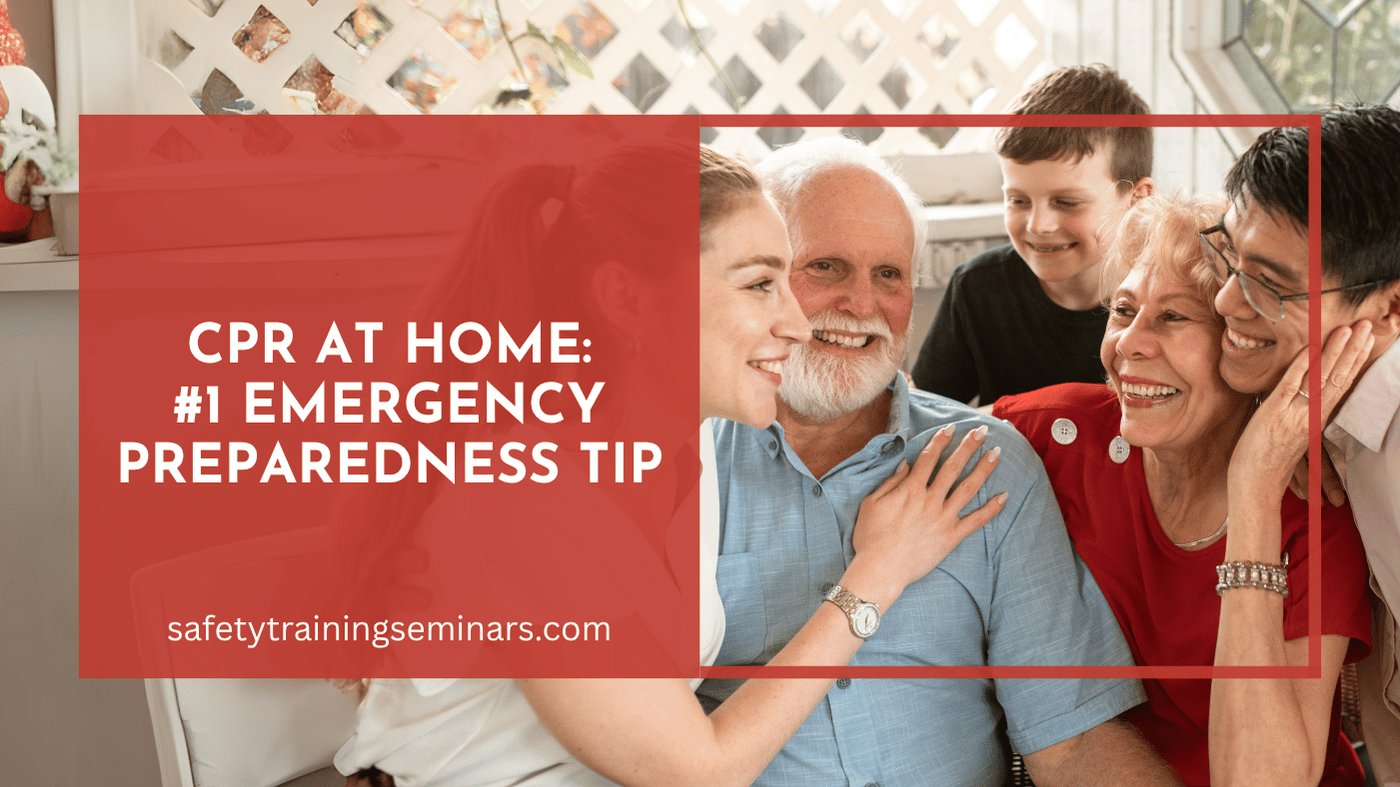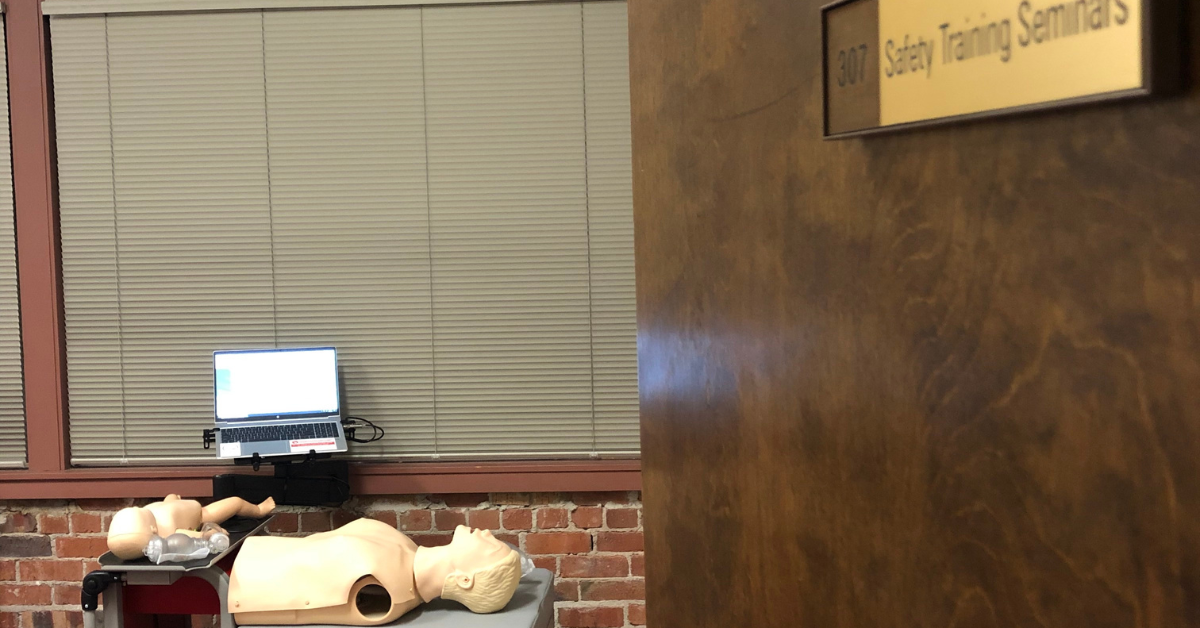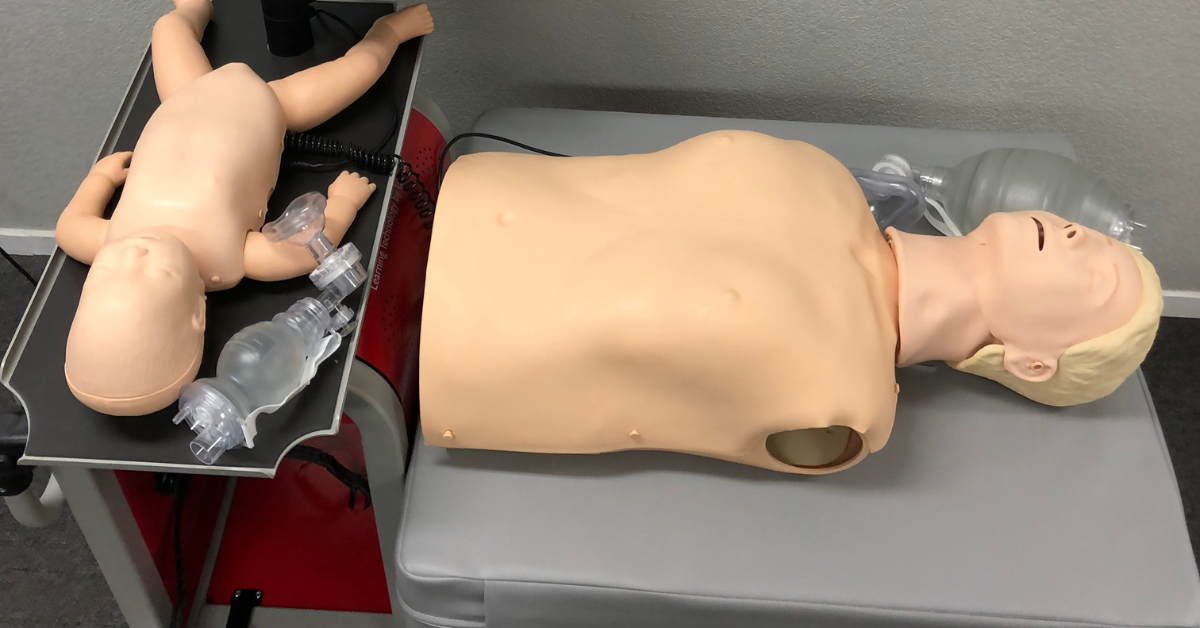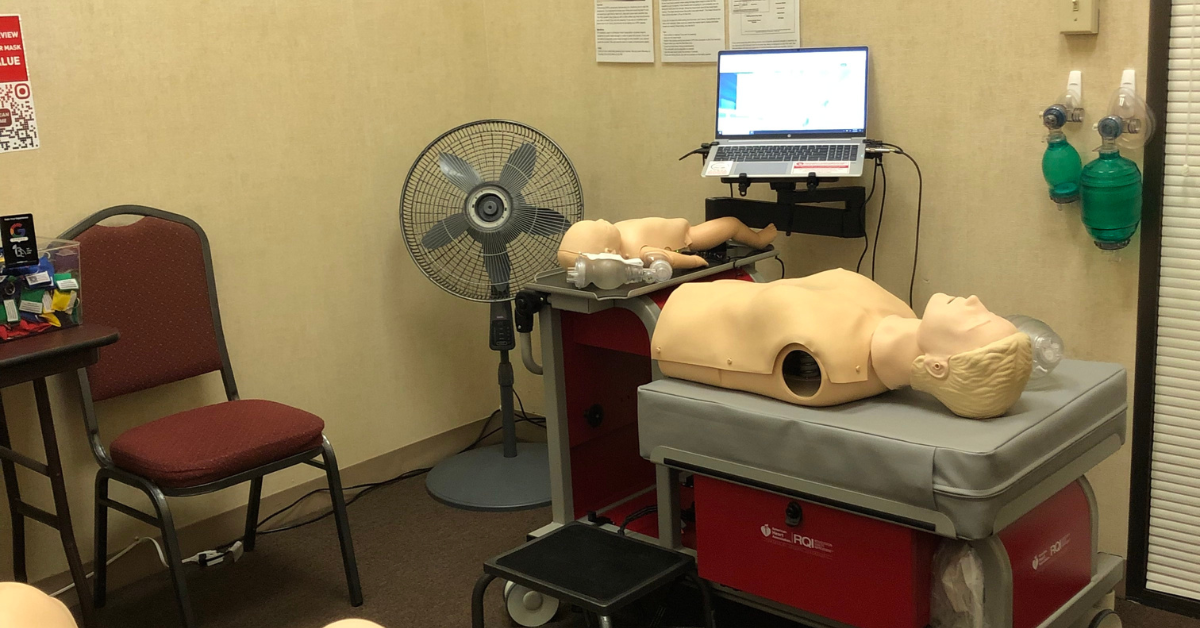When someone collapses at home, you have just minutes to act. CPR at home can mean the difference between life and death for your loved ones. This guide shows you exactly what you need to know to perform CPR effectively in your own home.
Learning CPR at home isn’t just about taking a class—it’s about being prepared when emergency strikes. Every year, over 350,000 cardiac arrests happen outside hospitals in the United States. The scary truth? Only about 40% of people who experience cardiac arrest at home receive CPR from a bystander.
But here’s the good news: when you perform CPR immediately, you can double or triple someone’s chances of survival. That’s why CPR training ranks as the number one emergency preparedness skill every household should have.
What Is CPR and Why Does It Matter at Home?
CPR stands for Cardiopulmonary Resuscitation. It’s a life-saving technique that combines chest compressions with rescue breaths to keep blood and oxygen flowing to vital organs when someone’s heart stops beating effectively.
Cardiac emergencies can happen to anyone at any time, even at home. A spouse might collapse while cooking dinner, an elderly parent could have a heart attack during a family gathering, or a child might choke on food at the dinner table.
The American Heart Association reports that effective CPR can keep someone alive until emergency medical services arrive. But here’s the catch: brain damage begins within 4-6 minutes without oxygen. Ambulances typically take 8-12 minutes to arrive.
This means you are often the first line of defense. Your knowledge of CPR at home could save someone you love.
Essential CPR Skills for Your Home
Adult and Teen CPR
For adults and teens, follow these steps:
Step 1: Check for responsiveness
Tap their shoulders firmly and shout “Are you okay?” If they don’t respond, call 911 immediately.
Step 2: Position your hands
Place the heel of one hand on the center of their chest, between the nipples. Place your other hand on top, interlocking your fingers.
Step 3: Start compressions
Push hard and fast at least 2 inches deep. Let the chest rise completely between compressions. Aim for 100-120 compressions per minute.
Step 4: Give rescue breaths
After 30 compressions, tilt their head back, lift their chin, and give 2 rescue breaths. Watch for the chest to rise with each breath.
Step 5: Continue cycles
Keep alternating 30 compressions with 2 breaths until emergency help arrives.
Child CPR (Ages 1-8)
CPR for children follows similar steps but with key differences:
- Use only one hand for compressions
- Press about 1.5 inches deep
- Be gentler with rescue breaths
- If you’re alone, perform CPR for 2 minutes before calling 911
Infant CPR (Under 1 Year)
For babies, the technique changes significantly:
- Use only two fingers for compressions
- Press about 1 inch deep
- Position fingers on the center of the chest, just below the nipple line
- Give gentle puffs of air that make the chest rise slightly
Setting Up Your Home for CPR Emergencies
Create an Emergency Action Plan
Every family member should know:
- Where to find your emergency contact list
- How to call 911 quickly
- Basic CPR steps for different age groups
- Location of your first aid supplies
Essential Supplies to Keep at Home
AED (Automated External Defibrillator)
Consider purchasing a home AED. These devices can shock the heart back into normal rhythm. Modern AEDs provide voice prompts that guide you through the process.
First Aid Kit Essentials
- CPR face mask or shield
- Disposable gloves
- Emergency contact numbers
- Aspirin (for heart attack symptoms)
- Emergency blanket
CPR Reference Cards
Keep laminated CPR instruction cards in your kitchen, bedroom, and car. When panic sets in, these visual reminders help you remember the steps.
Common Home Emergency Scenarios
Heart Attack vs. Cardiac Arrest
Many people confuse heart attacks with cardiac arrest. Here’s the difference:
Heart Attack: The person is usually conscious but experiencing chest pain, shortness of breath, or nausea. Give them aspirin if they’re not allergic and call 911.
Cardiac Arrest: The person collapses, becomes unresponsive, and stops breathing normally. Start CPR immediately.
Choking Emergencies
Before you need CPR, try the Heimlich maneuver for choking:
- Stand behind the person
- Place your arms around their waist
- Make upward thrusts just below the ribcage
- If they become unconscious, start CPR
Drowning at Home
Pool accidents, bathtub incidents, and even large water containers can cause drowning. If you pull someone from water:
- Check for breathing immediately
- Start CPR if they’re not breathing normally
- Don’t wait to “get the water out” first
Getting Professional CPR Training
Why Online Learning Isn’t Enough
While online CPR courses teach you the theory, hands-on practice is crucial. You need to:
- Practice on real manikins
- Learn proper hand placement
- Understand how much pressure to apply
- Get feedback on your technique
Choosing the Right CPR Course
Look for American Heart Association certified courses. These programs follow national standards and provide cards recognized by employers and healthcare facilities.
General Public: Heartsaver CPR and First Aid courses cover adult, child, and infant CPR plus basic first aid.
Healthcare Workers: BLS (Basic Life Support) courses include advanced techniques and team dynamics.
Childcare Providers: Pediatric CPR and First Aid courses focus specifically on children and infants.
At Safety Training Seminars, we provide AHA-certified CPR courses you can trust. Our affordable classes are tailored to fit a variety of needs—whether you’re a parent, healthcare worker, childcare provider, or simply want to be prepared at home. We’re here to help you gain the skills to save lives.
Maintaining Your Skills
CPR skills fade quickly without practice. Research shows that chest compression quality decreases significantly just 3-6 months after training.
Plan to:
- Take a refresher course every 2 years
- Practice with family members quarterly
- Review CPR videos online periodically
- Keep your certification current
Technology That Helps with CPR at Home
Smartphone Apps
Several apps can guide you through CPR:
- PulsePoint: Alerts trained responders to nearby emergencies
- CPR & Choking: Provides step-by-step instructions
- First Aid by Red Cross: Includes CPR guidance and emergency tips
Smart Home Integration
Modern technology can speed up emergency response:
- Program emergency contacts into smart speakers
- Set up automatic 911 calling systems
- Use medical alert devices for at-risk family members
Special Considerations for Different Family Members
Elderly Relatives
Older adults have higher risks of cardiac events. Key considerations:
- Bones may be more fragile, increasing risk of rib fractures during CPR
- Medications may affect heart rhythm
- Pre-existing conditions require special attention
Pregnant Women
If a pregnant woman needs CPR:
- Position her on her back
- Place a pillow or rolled towel under her right side
- Perform chest compressions slightly higher on the chest
- Continue until emergency services arrive
Family Members with Disabilities
Adapt your approach based on specific needs:
- Communication barriers may require alternative methods
- Physical disabilities might affect positioning
- Medication interactions could influence the emergency
Building Community Preparedness
Neighborhood CPR Networks
Consider organizing neighborhood CPR training sessions. When more people know CPR, survival rates increase for everyone.
School and Workplace Training
Encourage CPR training at your children’s schools and your workplace. Many organizations offer group discounts for CPR classes.
Social Media Awareness
Share CPR information on social media platforms. Your posts might encourage others to get trained.
What to Do After Performing CPR
Follow-Up Care
Even if CPR appears successful:
- Keep monitoring the person’s breathing and pulse
- Stay with them until emergency services arrive
- Be prepared to restart CPR if needed
- Provide information to paramedics about what happened
Emotional Support
Performing CPR can be traumatic, whether successful or not. Consider:
- Counseling services for yourself and family members
- Support groups for people who’ve performed emergency care
- Professional help if you experience ongoing stress
Common CPR Myths Debunked
“I Might Make Things Worse”
Many people hesitate to perform CPR, worried they’ll cause harm. The truth: someone in cardiac arrest is already clinically dead. CPR can only help.
“I Need to Be Certified to Help”
While certification is valuable, Good Samaritan laws protect people who provide emergency care in good faith. Don’t let lack of certification stop you from helping.
“Mouth-to-Mouth is Always Required”
Current guidelines emphasize chest compressions over rescue breaths. Hands-only CPR is better than no CPR at all.
Making CPR Training Accessible
Cost-Effective Training Options
CPR training doesn’t have to break the bank:
- Community centers often offer discounted classes
- Some employers provide free training
- Group rates reduce individual costs
- Online theory combined with brief skills sessions cuts time and money
Overcoming Common Barriers
Time Constraints: Many CPR courses take just 2-3 hours total
Fear of Certification Tests: Most programs have very high pass rates
Physical Limitations: Instructors can adapt techniques for different abilities
Language Barriers: Many courses offer multilingual instruction
Your Next Steps
Learning CPR at home starts with taking action today. Here’s how we can help you get started:
- Join one of our CPR classes: At Safety Training Seminars, we offer certified, hands-on instruction in a comfortable setting. Our classes are designed for all ages, with flexible schedules and group rates to fit your needs.
- Get your family involved: CPR is a skill everyone should know, and training together ensures you’re all prepared.
- Prepare your home emergency supplies: Set aside time this weekend to organize essential items for any emergency.
- Practice regularly: We recommend scheduling monthly practice sessions to keep your skills sharp.
- Stay up to date: Refresh your training every two years to ensure you’re always ready.
CPR isn’t just a skill—it’s the difference between being a bystander and a lifesaver. In an emergency, every second counts, and your preparedness could save someone you love.
The best time to learn CPR was yesterday. The second best time is today. Let’s get started!
Those seeking advanced training beyond basic life support can enroll in PALS Certification Classes, ideal for healthcare providers who respond to pediatric emergencies. Meanwhile, individuals in the East Bay can conveniently access BLS CPR Classes in Antioch to fulfill their core CPR training requirements.





